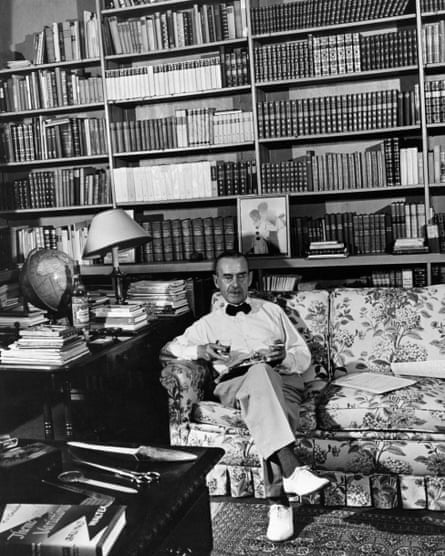Germany has bought the California home that once belonged to the Nobel prize-winning author Thomas Mann and plans to turn it into a “centre for transatlantic dialogue”, after fears it was being sold off as a “teardown” – of value only for the land on which it stands – caused outrage among German fans of the author.
Three thousand curators and writers – including Nobel laureate Herta Müller – signed an online petition for the house to be saved after it went on the market at an asking price of $15m.
The sale was secured earlier this week after a period of hard bargaining, according to the Süddeutsche Zeitung newspaper. Germany’s foreign minister, Frank-Walter Steinmeier, told the paper the building had been a “home for many Germans who worked toward a better future for their country, paved the way for an open society and laid the foundations for common transatlantic values”.
“We want to revive the Thomas Mann villa in that spirit,” he said. The renovation of the house is expected to take two years.
Mann fled Germany with his family in 1933, when Hitler came to power, moving first to Switzerland and then to the US, where he had the five-bedroom house in the Pacific Palisades area of Los Angeles built to his own specifications.

He described the project as “a reckless and self-willed prank”, writing to his brother Heinrich that he had bought “a property with seven palms and many citrus trees”.
Designed by the modernist architect JR Davidson, Mann’s house hosted a group of exiled German writers, artists and intellectuals of the Exilliteratur, a group including Bertolt Brecht and Bruno Frank, who would gather there and at the nearby home of writer Lion Feuchtwanger, the Villa Aurora, also in Pacific Palisades.
One of the visitors he received there was a 14-year-old Susan Sontag, who turned up for tea with a schoolfriend in 1947 and later wrote about the experience for the New Yorker.
As they waited for tea and cake to be served in Mann’s study, Sontag observed “the cluttered table, pens, inkstand, books, papers … and books, books, books in the floor-to-ceiling shelves that covered two of the walls”.
She continued: “To be in the same room with Thomas Mann was thrilling … But I was also hearing the siren call of the first private library I had ever seen.”
In 1952, sensing that McCarthyism was putting an end to American liberalism, the family returned to Europe. Mann died three years later in Switzerland.
As the house was put up for sale in August this year, New Yorker critic Alex Ross wrote: “The ‘magic villa’ on San Remo, as the German press calls it, is more than the home of a great writer: it is a symbol of a fraught period in American history, one that gave a refugee from nazism feelings of deja vu.”
